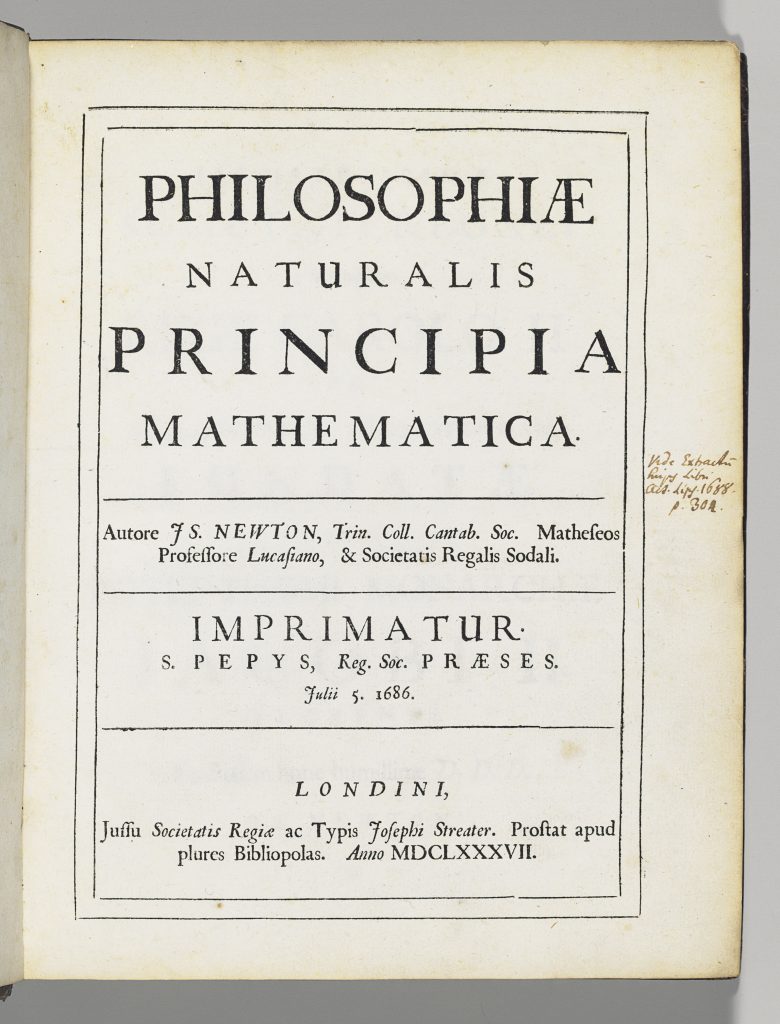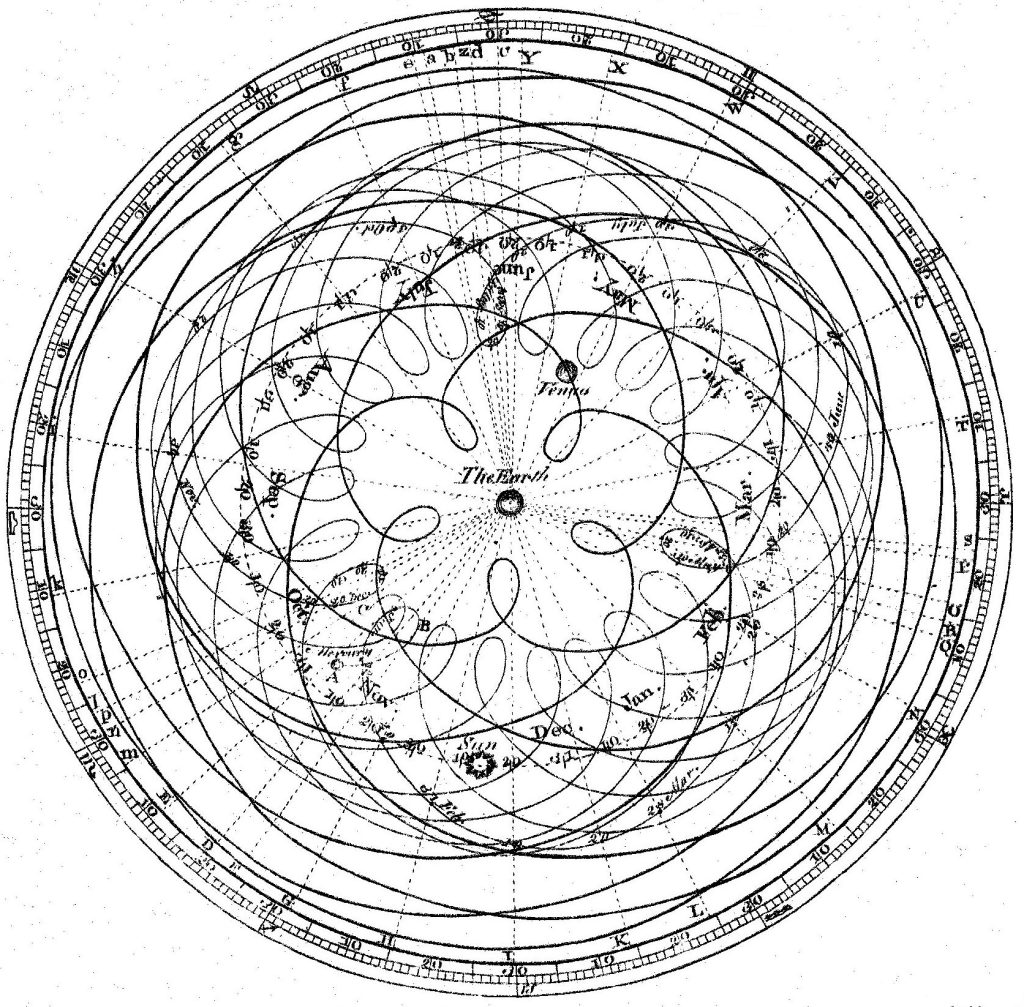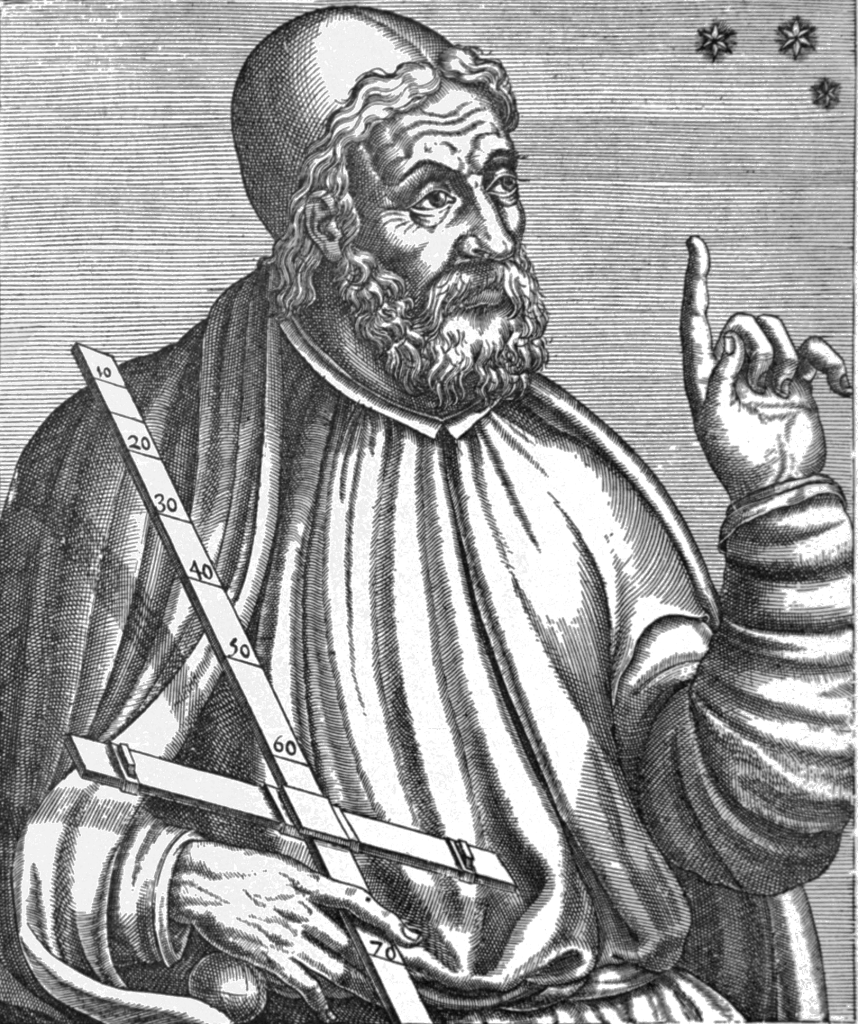21 Introduction to Gravity and Orbits
Janice Hester
Gravity is the force that holds you to the Earth’s surface, holds the Moon in orbit around the Earth and the planets in orbit around the Sun. It’s also the force that holds stars together, holds stars in orbits within galaxies, pulls gas together to form stars, pulls galaxies together into large structures, and helps control the eventual fate of the Universe.
In the 1600s, Isaac Newton proposed a theory of universal gravitation to explain the orbit of the Moon around the Earth and the planets (including Earth) around the Sun. To explain planetary orbits, Newton also codified a new set of ideas about how objects (including moons and planets) move. These ideas are better known as Newton’s laws of motion. Gravity and Newton’s laws of motion work together to help us explain many of the phenomena that we observe in the solar system and throughout the Universe.
Planetary Motions

When Newton published his ideas on motion and gravity in his book the Principia in 1687, it effectively ended the debate between the heliocentric and geocentric models of the solar system. It did this by explaining — not just describing — the orbits of the planets around the Sun. When we watch the motions of the Moon, Sun, and stars across the sky, it looks like they are circling around the Earth. Of course, these observed motions can also be explained by the motions of the Earth – revolving around a tilted axis while orbiting the Sun. It was the motions of the planets, not the stars, that were at the center of the debate between the geocentric and heliocentric views. The observed motions of the planets are more complicated and harder to explain or predict than the motions of the Sun and stars.
Without a telescope, planets looks like bright, colorful stars. They aren’t the only bright colorful stars in the sky. The bright stars Antares in the constellation Scorpius, Betelgeuse in Orion, and Pollux in Gemini appear red on a dark enough night. Sirius (the dog star) in Canis Major and Castor in Gemini are blue. And the star called Capella is actually a system of stars that together appear yellow.
By eye, what sets the planets apart from the stars is the way that they move through the sky. Unlike the stars, planets do not stay still within the fixed patterns of the constellations. Instead, when tracked from night to night across weeks or months they appear to move through the constellations of the ecliptic (the path through the constellations that the Sun appears to follow throughout the year).

Imagine the planets as they orbit the Sun. While the planets move in their orbits, we too are moving, shifting our perspective on the planets compared to the much more distant stars. These relative motions create the complex paths that the planets appear to follow through the sky. The most interesting perspective effect is when a planet appears to go into retrograde. Usually, the superior planets Mars, Jupiter, and Saturn — the planets that are further from the Sun than the Earth is — appear to move from west to east through the fixed constellations. But sometimes, for a few months, one of these planets appears to travel backwards — from east to west. This apparent backwards motion happens as the Earth catches up to passes the planet in its orbit.
Each of the planets orbits at its own speed. Swift Mercury takes only 88 days to complete one orbit, but Saturn — the most distant planet visible by naked eye — takes over 29 Earth years (10,756 Earth days) to complete one orbit around the Sun. The faster moving Earth overtakes and laps slow-moving Saturn (and Jupiter) about once a year. It takes Earth a little over two years to lap Mars. Each time this happens, the planet appears — from our perspective on Earth — to reverse direction, traveling west through the sky before reversing course again. If the planets orbited at a constant speed around a perfect circle in flat solar system, then these motions would be easy to predict. But the planets orbits aren’t quite circular — they are ellipses — and the planets speed up and slow down slightly as their distance from the Sun changes. Because of these variations, the timing and apparent path of each apparent retrograde motion is subtly different.
Geocentric vs Heliocentric

Ancient astronomers carefully observed the sky and tried to predict the motions of the planets because they were also astrologers. They wanted to predict the motions of the planets into the future in a vain attempt to predict future events on Earth. To accurately predict the motions of the planets, including their retrograde motions, they developed extremely precise but very complex geocentric models. Ptolemaic models of the solar system — named after the Ancient Greek astronomer Ptolemy — resembled complex clockwork with planets moving along rings within rings. They were forced into these complex models by placing the Earth at the center of the universe.

A heliocentric model of the solar system was first presented by the ancient Greek astronomer Aristarchus of Samos. He and other Greek astronomers understood that retrograde motion could be explained as a perspective shift in a heliocentric solar system, but resisted the idea that the Earth moved like the planets. In the 1500’s the Catholic astronomer Nicholas Copernicus resurrected the idea of the heliocentric solar system and proposed a model in which the Earth and other planets all moved around the Sun on circular orbits. He published his work in the book De revolutionibus orbium coelestium (On the Revolutions of the Celestial Spheres) shortly before his death in 1543. The publication of this work was the start of a major shift in our understanding of the Universe which is known as the Copernican Revolution.

Challenging the geocentric view of the solar system meant also challenging Aristotle’s ideas about how and why objects move. Galileo Galilei was the first person to point a telescope up at objects in the sky. With his telescope, he observed four bright moons circling the planet Jupiter, watched the phases of Venus change as it circled the Sun, and saw craters on the Moon — showing that it isn’t a perfect ethereal body, but an object of substance. In the same year, 1609, Johannes Kepler published his work the Astronommia Nova (The New Astronomy) in which he argued — based on detailed data taken by the great naked-eye astronomer Tycho Brahe — that Mars travels around the Sun along an elliptical path and that the planet speeds up and slows down along its orbit. He continued this work in the 1619 book Harmonice Mundi (The Harmony of the World) in which he described elliptical orbits for all of the visible planets and presented a simple mathematical relationship between a planet’s average distance from the Sun and the speed at which it orbits the Sun. In addition to these motions of objects in the heavens, in a heliocentric solar system, the massive Earth itself must also move. All of these motions contradict the Aristotelian view that heavenly bodies are ethereal — made differently than objects on Earth — and are mounted on the surfaces of perfect spheres.
The heart of Newton’s work on planetary orbits was abandoning Aristotle’s view completely. He treated the Moon and planets as if they were objects made of the same stuff as Earth and following the same physical laws. He developed and understanding of how objects on Earth move and then applied that understanding to the heavens.
